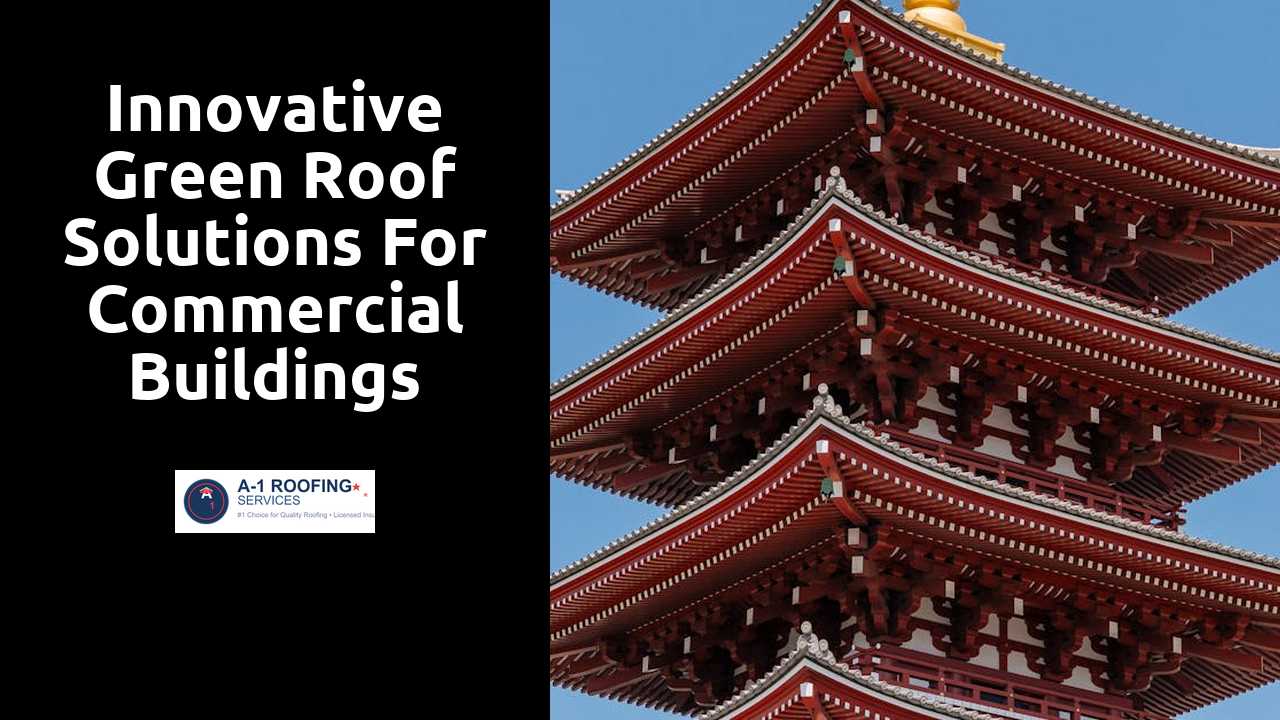
Innovative Green Roof Solutions for Commercial Buildings
Table Of Contents
Environmental Impact of Green Roofs
Green roofs significantly contribute to urban environmental health by improving air quality and reducing the urban heat island effect. Vegetation on rooftops absorbs carbon dioxide and other pollutants while releasing oxygen. This process not only enhances local air quality but also helps moderate building temperatures. Additionally, green roofs play a role in stormwater management by capturing rainwater, which can reduce runoff and decrease the risk of flooding in urban areas.
In addition to air and water benefits, green roofs support biodiversity in cities. By providing habitats for various plant and animal species, these installations serve as essential green spaces in dense urban environments. This increased biodiversity contributes to ecosystem resilience and can aid in pollinator health, which is crucial for urban horticulture. Through these ecological advantages, green roofs promote a more sustainable urban landscape, enhancing the overall quality of life for residents.
Click here for additional info.
Promoting Biodiversity in Urban Areas
Urban environments often lack natural habitats, making it difficult for various species to thrive. Green roofs create new ecosystems, offering critical refuge for pollinators like bees and butterflies. These elevated green spaces serve as vital stepping stones, connecting fragmented habitats and enhancing biodiversity. Their ability to host a diverse array of plant species supports local ecosystems, promoting overall environmental health.
The various layers of a green roof can simulate natural ecosystems. This complexity encourages a range of wildlife to inhabit these spaces, from birds to beneficial insects. By integrating native plants that are well-adapted to local conditions, green roofs can enhance the resilience of urban biodiversity. This approach not only benefits wildlife but also helps mitigate the urban heat island effect, making cities more sustainable and livable.
Cost Factors Involved in Green Roof Projects
The financial aspects of implementing green roofs can vary significantly based on various factors. Initial costs typically encompass materials, installation, and the necessary infrastructure to support the added weight. These expenditures often reflect the complexity of the design and the specific plant selections, which may require specialized knowledge and expertise for installation.
Long-term savings should also be considered when evaluating the overall costs. Green roofs can reduce energy expenses by improving insulation, leading to lower heating and cooling costs. Additionally, they can enhance stormwater management, potentially decreasing expenses related to drainage systems. When weighed against the initial investments, these ongoing savings can present a compelling case for choosing green roofs in commercial buildings.
Evaluating Initial Investments and Long-Term Savings
Implementing a green roof involves significant upfront costs, which can deter some building owners. Factors such as the choice of plant species, substrate materials, and structural modifications all contribute to these initial expenses. Additionally, the complexity of installation can increase labor costs. However, assessing these expenses within the context of long-term benefits is essential. Increased property value, potential energy savings, and improved stormwater management are key advantages that can offset the initial investment over time.
Investing in a green roof can lead to reduced utility bills due to enhanced insulation and natural temperature regulation. The vegetation can absorb and filter rainwater, thereby lowering the costs associated with stormwater management and drainage systems. Long-term savings may also stem from maintenance costs, which can be lower due to the durability of mature green roofs. As these systems become more established, they require less frequent upkeep, allowing property owners to reap the financial rewards of their investment.
Innovations in Green Roof Technology
Advancements in technology have revolutionized the way green roofs are designed and maintained. Modular green roof systems have gained popularity due to their ease of installation and scalability. These pre-planted modules allow for rapid deployment and flexibility in design, making them suitable for various building types. Additionally, the integration of lightweight materials helps reduce structural load, ensuring that roofs can support vibrant vegetation without compromising building integrity.
Smart technology is also playing a crucial role in enhancing green roof performance. Automated irrigation systems utilize moisture sensors to determine when plants need water, significantly optimizing water usage and minimizing waste. Moreover, the incorporation of monitoring systems allows property owners to track the health of their green roofs in real-time. This data-driven approach enables more effective maintenance and centralized management, contributing to the long-term success and sustainability of green roof installations.
Smart Systems and Automated Irrigation
The integration of smart systems into green roof design represents a significant advancement in building maintenance and sustainability. These systems utilize sensors and data analytics to monitor environmental conditions such as moisture levels, temperature, and sunlight exposure. By collecting real-time data, smart systems can adjust irrigation schedules and nutrient delivery automatically, ensuring that plants receive optimal care. This technology not only enhances plant health but also conserves water by minimizing over-irrigation.
Automated irrigation systems complement these smart technologies by providing precise irrigation based on the specific needs of the vegetation. Rather than relying solely on timers, these systems respond dynamically to changing weather conditions. Rain sensors can halt irrigation when precipitation occurs, while soil moisture sensors trigger irrigation only when the soil becomes dry. Such innovations can significantly reduce water usage and operational costs, making them an attractive option for commercial buildings focused on sustainable practices.
Related Links
Benefits and Challenges of Built-Up Roofing SystemsThe Versatility of PVC Roofing Systems for Business Environments